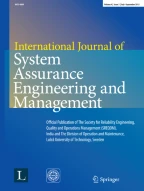Abstract
The primary aim of this paper is to bring an insurance plan for HIV/AIDS patients. Recent studies based on antiretroviral therapy (ART) and highly active antiretroviral therapy (HAART) suggests long term survival of HIV/AIDS patients. Use of cure fraction model has revealed that a considerable proportion of patients are long term survivors out of the diseased cohort (Grover et al. 2019). The survival time is defined under the purview of CD4 cell counts which are considered to be the disease marker for HIV/AIDS patients. Many patients suffer financially along with risk of death. Here, we introduce an insurance plan which involves low risk for insurers and affordable premium for patients. The premium is calculated, using the survival estimates from Kaplan–Meier survival curve, on the basis of a deterministic model.
Similar content being viewed by others
References
Amatya R, Vajpayee M, Kaushik S, Kanswal S, Pandey RM, Seth P (2004) Lymphocyte immunophenotype reference ranges in healthy Indian adults: implications for management of HIV/AIDS in India. Clin Immunol 112(3):290–295
Badri M, Maartens G, Wood R (2001) Predictors and prognostic value of oral hairy leukoplakia and oral candidiasis in South African HIV-infected patients. SADJ 56(12):592–596.
Bowers NL, Gerber HU, Hickman JC, Jones DA, Nesbitt CJ (1986) Actuarial mathematics. Society of Actuaries, Itasca
Chiang CL (1968) Introduction to stochastic processes in biostatistics. Wiley, New York
Grover G, Vinit PK, Thakur AK (2018) Actuarial modeling of insurance premium for patients with acute lymphoblastic leukemia (ALL). J Appl Quan Methods 13(5):1842–4562
Grover G, Thakur AK, Garg B (2019) Cure fraction estimation for traumatic lumbar puncture in patients with acute lymphoblastic leukemia. Res Rev J Oncol Hematol 7(3):12–21
Haberman S, Pitacco E (2018) Actuarial models for disability insurance. Routledge.
Luptáková ID, Bilíková M (2014) Actuarial modeling of life insurance using decrement models. J Appl Math Stat Informatics 10(1):81–91
Macdonald AS (1996) An actuarial survey of statistical models for decrement and transition data-I: multiple state, Poisson and Binomial models. Br Actuarial J 2(1):129–155
Norberg R (2002) Basic life insurance mathematics. Lecture notes, Laboratory of Actuarial Mathematics, University of Copenhagen.
Rejda GE (2011) Principles of risk management and insurance. Pearson Education India, Chennai.
Solomon S, Solomon SS, Ganesh AK (2006) AIDS in India. Postgrad Med J 82(971):545–547. https://doi.org/10.1136/pgmj.2006.044966
Slud EV (2012) Actuarial mathematics and life-table statistics. Chapman & Hall/CRC, New York.
Syndrome AID (1990) Interim proposal for a WHO staging system for HIV infection and disease. Weekly Epidemiol Rec 65:221–224
Vajpayee M, Kaushik S, Sreenivas V, Wig N, Seth P (2005) CDC staging based on absolute CD4 count and CD4 percentage in an HIV-1-infected Indian population: treatment implications. Clin Exp Immunol 141(3):485–490. https://doi.org/10.1111/j.1365-2249.2005.02857.x
Wang H, Wolock TM, Carter A, Nguyen G, Kyu HH, Gakidou E, Mooney MD, Fraser MS, Sligar A, Larson HJ, Friedman J, Brown A, Dandona L, Fullman N, Haagsma J, Khalil I, Lim SS, Coates MM (2016) Estimates of global, regional, and national incidence, prevalence, and mortality of HIV, 1980–2015: the Global Burden of Disease Study 2015. Lancet HIV 3(8):e361–e387
World Health Organization (2005) Interim WHO clinical staging of HVI/AIDS and HIV/AIDS case definitions for surveillance: African Region (No. WHO/HIV/2005.02). World Health Organization, Geneva.
Author information
Authors and Affiliations
Corresponding author
Additional information
Publisher's Note
Springer Nature remains neutral with regard to jurisdictional claims in published maps and institutional affiliations.
Rights and permissions
About this article
Cite this article
Grover, G., Vinit, *.K. & Sehgal, V.K. Estimation of premium cost for HIV/AIDS patients under ART. Int J Syst Assur Eng Manag 12, 77–83 (2021). https://doi.org/10.1007/s13198-020-01034-2
Received:
Revised:
Published:
Issue Date:
DOI: https://doi.org/10.1007/s13198-020-01034-2
